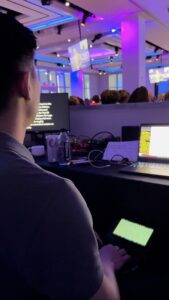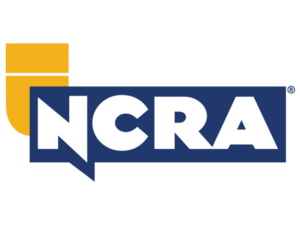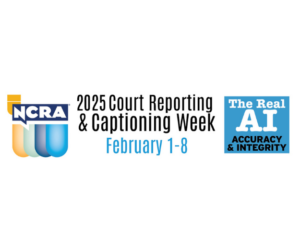On Feb. 20, the FCC issued its final report and order related to the captioning quality notice of proposed rulemaking, an order that had been open for approximately a decade. In lieu of strict metrics to measure captioning quality, the FCC opted to issue best practices which captioners, captioning vendors, content creators, and video distributors are encouraged to follow.
Over the summer, NCRA finalized best practices for individual captioners and captioning vendors that helped shape the eventual best practices that were adopted. The FCC eventually implemented best practices submitted by the National Cable and Telecommunications Association, the National Association of Broadcasters, the Motion Picture Association of America, and a coalition of four captioning vendors (WGBH, NCI, VITAC, and CaptionMax). The final report and order will be implemented on Jan. 15, 2015, providing ample opportunity to ensure that captioners and captioning vendors comply with the best practices.
Captioning quality will now be measured via four non-qualitative measures:
- Accuracy – the captions “accurately reflect what is in the program’s audio track by matching the dialogue, music, and sounds, and identify the speakers”;
- Synchronicity – the captions “are delivered synchronously with the corresponding dialogue and other sounds at a speed that can be read by viewers”;
- Completeness – the captions “are complete for the entire program”;
- Placement of the captions – the captions “do not obscure important on-screen information and are not obscured by other information on the screen.”
There are different best practices and standards related to live programming, near-live programming (defined as being created within 24 hours of the broadcast date), and pre-recorded programming. (See below for the best practices related to captioners and captioning vendors.)
At this point, the FCC did not expand the number of media markets that need to be captioned by a live, realtime captioner beyond the top 25. They did accept best practices submitted by NAB related to the use of Electronic Newsroom Technique in media markets below the top 25. If followed, these best practices will be able to give the consumer a more complete captioning experience than they currently have. However, the FCC is only giving broadcasters three months to comply with this order and is asking for a report one year from that time in May 2015.
NCRA played a major role in urging the FCC to adopt a best practices model that focused on quality of output rather than an inaccuracy rate defined by metrics. Significantly, the FCC does not have direct authority over captioners and captioning vendors like they do over content creators and video distributors, which means that enforcement action cannot be directly levied against captioners and captioning vendors by the FCC. Obviously, content creators and video distributors now have an incentive to use captioners and captioning vendors who abide by the best practices, so NCRA encourages all of our members to follow them.
Essentially, this report and order means that captioners and captioning vendors will be encouraged to follow the FCC’s best practices so specific captioning errors can be minimized. NCRA is hopeful that broadcasters and content creators following best practices will allow the captions to reach the end-user and not be subject to technical mistakes and errors. If you have any questions, contact Adam Finkel, NCRA’s Assistant Director of Government Relations, at afinkel@ncra.org.
The specific best practices related to captioning vendors, individual captioners, and those who caption offline for pre-recorded programming, which begin at section 61 on page 39 of the full report, can be found here.













